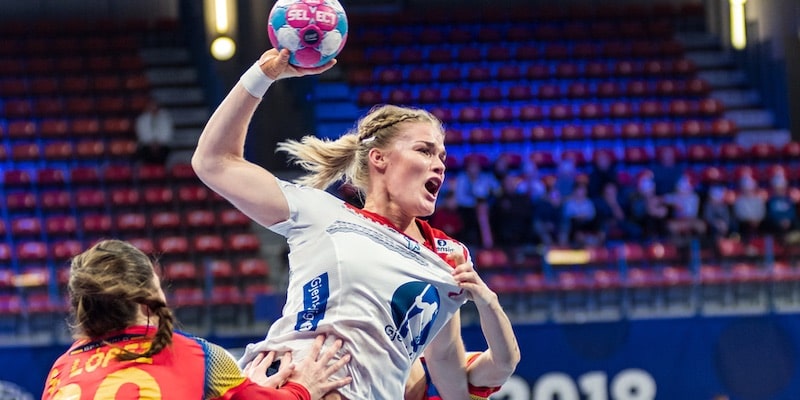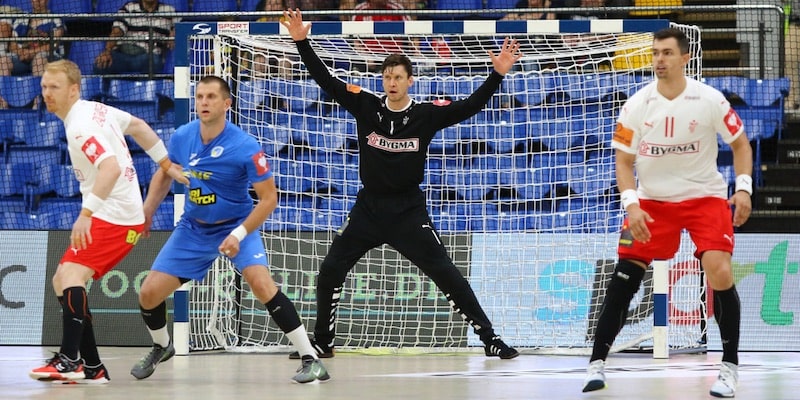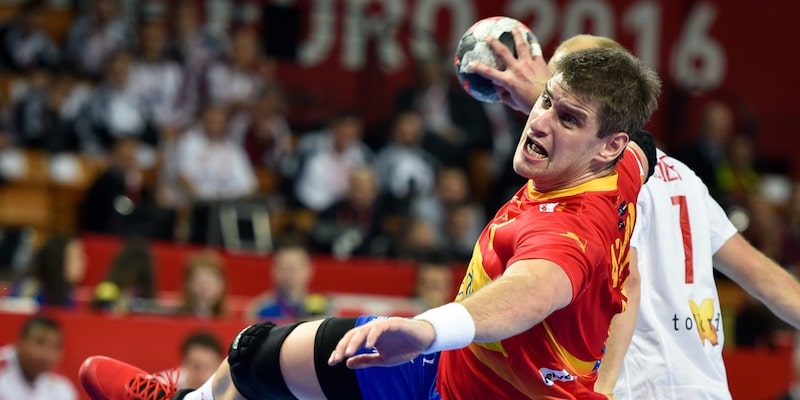We explain what handball or handball is, its rules and most notable players. In addition, we tell you the history of this sport.

What is handball?
Handball, also known as handball, is a sport of European origin, in which two teams face each other for control of the ball, which they must drive towards the opposing goal or goal using their hands. Its dynamics are similar to that of soccer, except that the use of the feet to handle the ball is not allowed.
Handball teams are made up of between 7 and 11 players each on the court depending on the modality in which it is played, one of whom acts as goalkeeper for his team. In addition, each team usually has a similar number of substitutes, who can relieve active players at any time. The team that puts the ball into the opponent's goal the most times throughout the game, that is, scores the most goals, will be the winner. If there is no winner, a tie may be declared.
In its seven-player variant (on an indoor court), handball is an Olympic sport, that is, it participate in the International Olympic Games despite the fact that its practice in the world is not widespread, compared to other traditional sports. The global body that oversees handball activities and championships is the International Handball Federation (IHF for its acronym in English), based in Basel, Switzerland, an entity that coordinates the different regional associations and confederations of this sport.
See also: Types of sport
History of handball
Handball is a relatively young sport, whose formal rules were established at the beginning of the 20th century. However, there are very similar antecedents, some so remote that they date back to Antiquity, such as the “Urania game” of classical Greece or the harpastum of the Romans: sports in which a ball was passed through the air using the hands.
Before the 20th century, handball consisted of a group of similar sports with more or less similar rules, practiced in central and northern Europe.
Thanks to the cooperation of players and fans, In 1926 the International Handball Regulations were created and two years later the first organization around the sport: the International Amateur Handball Federation, where amateur associations from 11 countries met. The sport's formal debut in an international context occurred at the IX Summer Olympic Games.
Initially, handball was played in the open field and with 11 players, on soccer fields and similar spaces. However, The weather conditions forced the appearance of an indoor variant, practiced with 7 players. This variant became more popular and was recognized as an Olympic sport in 1965. Its first participation in the history of the Olympic Games was in the games held in Munich, Germany, in 1972, in the men's category; and in 1976 in the games held in Madrid, in the women's category.
Rules and fundamentals of handball

In a handball game Two teams face each other for two periods of half an hour each with a short break in between. The winner will be whoever at the end of this period has scored the most goals in the opposing goal. Players must touch the ball only with their hands and must drive it individually or by passing of team towards the opposite field, until inserting it in the 2 x 3 meter goal and thus scoring a point.
The goals are located at the ends of the court, normally 40 x 20 meters. They are guarded by a goalkeeper, who is allowed to use, in addition to his hands and arms, also his feet or other parts of the body to stop enemy shots.
Apart from the position of the goalkeeper, the rules do not stipulate fixed positions for the players, but attack is usually combined with defense through a central or front-line player, two wingers who advance in the enemy field, two full-backs who are located on the sides of the central and a pivot or pivot in charge of breaking into the rival defense.
The game flows freely and is interrupted only when indicated by the referee. The physical contact is continuous, but subject to rules preventing direct physical aggression and the field is delimited by a series of lines that establish the legal playing area and the taking of penalties and free kicks.
The handball rules are reviewed every four years.
handball world cup
In addition to the Olympic Games, The highest world handball competition is the World Championship, organized by the International Handball Federation celebrated in both its male and female variants. In both cases, the teams of European countries are the major sporting protagonists, with the notable exception of South Korea, world champion in 1995.
The first world handball championship was held in 1954, exclusively for the men's category, and on that occasion the Swedish team won the cup. Currently the World Championship takes place in odd years. There are also different regional handball cups: the European Championship, the EHF Champions League, the European Super Cup, among others.
Most notable handball players

Some of the most prominent handball players in the world are:
- Julen Aguinagalde of the Spanish team, considered the best offensive pivot in the world.
- Niklas Landin of the Danish national team, the world's leading handball goalkeeper.
- Kari Brattset Dale of the Norwegian national team, was named most valuable player in the 2021 Women's World Cup, due not only to her scoring but also to her contribution to defense.
- Aron Pálmarsson of the Icelandic national team, top player and one of the most coveted competitors of European clubs in 2017.
- Domagoj Duvnjak of the Croatian national team, ranked among the best in the world for several years now, considered the “complete player” given his versatility.
- Mikkel Hansen of the Danish team, owner of the best right arm of all the handball teams in the world.
- Cristina Neagu of the Romanian national team, is the only female player to have won the IHF Player of the Year award four times.
- Daniel Narcisse of the French team, one of the best players at the 2017 World Cup held in France, despite being 38 years old at the time.
Continue with: Volleyball
References
- “Handball” on Wikipedia.
- “Getting to know handball” (video) at CDAG Guatemala.
- “Handball” in the Dominican Olympic Committee.
- “Handball” in the National University Sports Federation of Chile.





